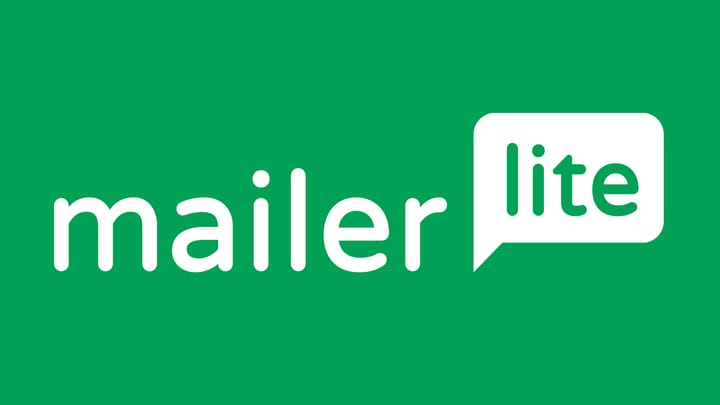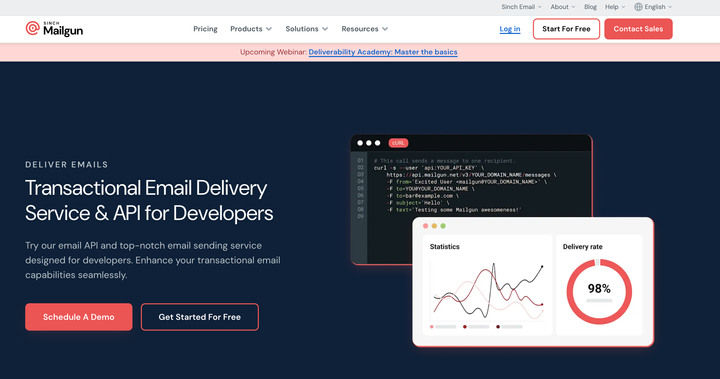Top 10 ConvertKit (Kit) Alternatives for Creators in 2025
ConvertKit, recently rebranded as Kit, has carved out a distinctive niche in the email marketing landscape by specifically catering to creators, bloggers, and digital product sellers.
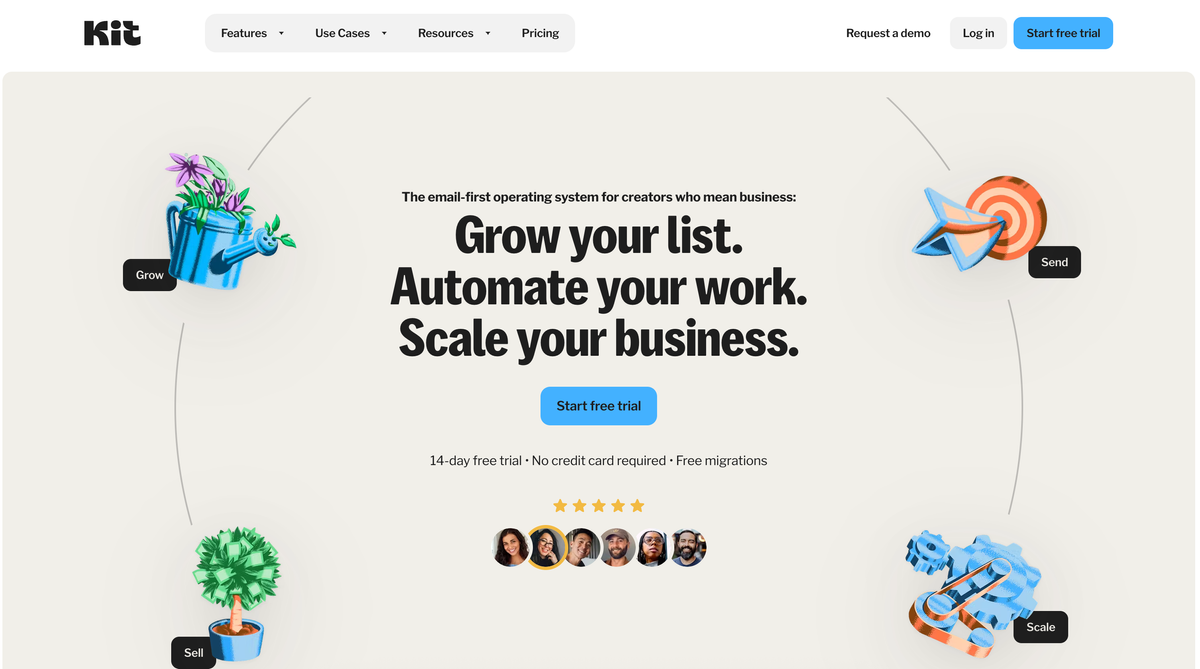
ConvertKit, recently rebranded as Kit, has carved out a distinctive niche in the email marketing landscape by specifically catering to creators, bloggers, and digital product sellers. With its intuitive tagging system, streamlined text-based emails, and creator-focused features, it's become the go-to platform for many content creators.
However, despite its popularity in the creator space, Kit isn't necessarily the perfect solution for everyone. Creators and marketers might find themselves exploring alternatives for several compelling reasons:
- Pricing concerns: As your subscriber list grows, Kit's pricing can become significantly higher than alternatives
- Design limitations: The platform emphasizes simplicity, sometimes at the expense of visual customization
- Scaling challenges: Some businesses outgrow Kit's capabilities as their marketing needs become more sophisticated
- Feature gaps: Certain specialized features might be missing for your specific creator business model
In this comprehensive guide, we'll explore the top 10 Kit alternatives, highlighting their strengths, weaknesses, and ideal use cases to help you find the perfect platform for your creator business in 2025.
1. Maileroo—Best for Budget-Conscious Creators
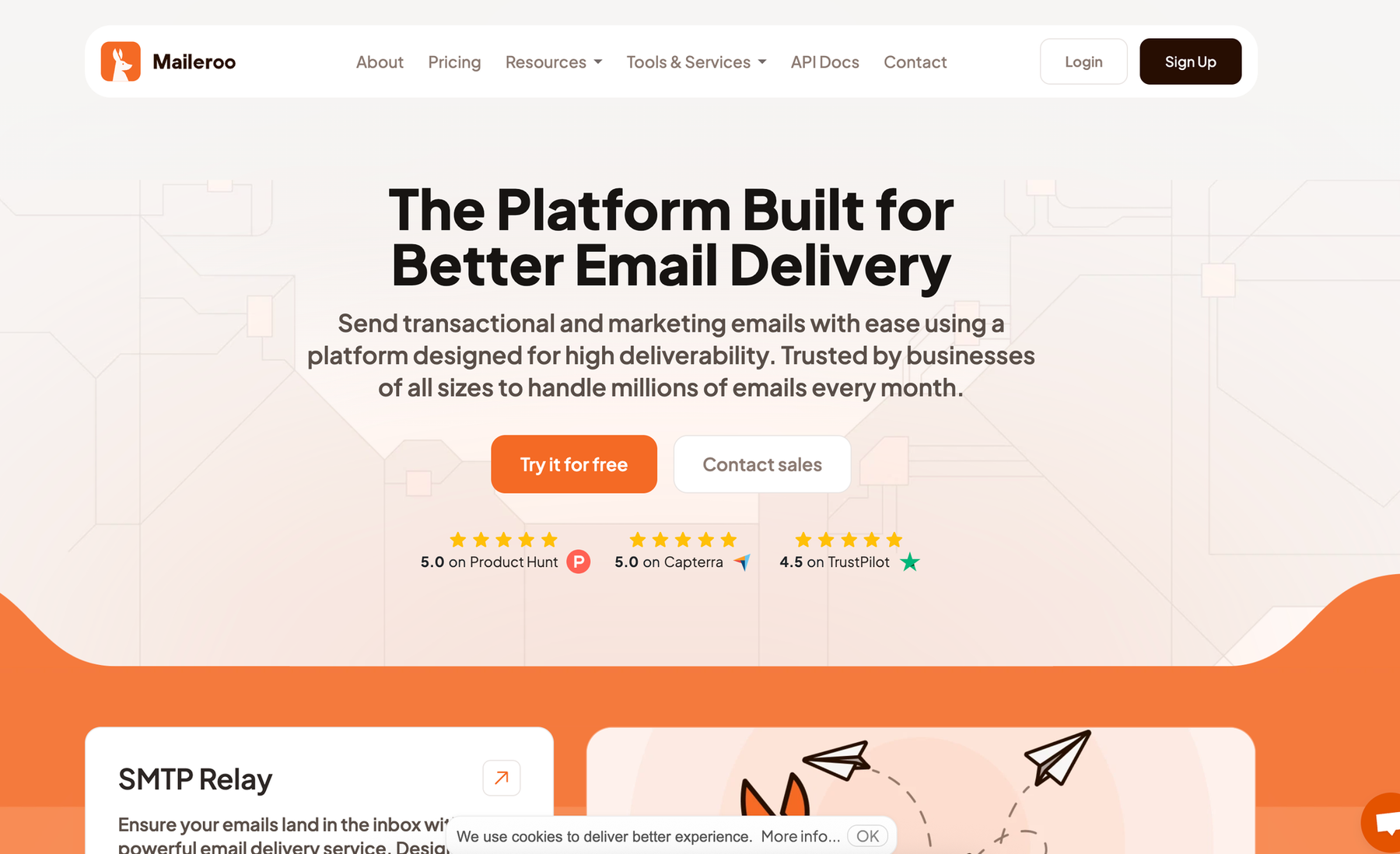
Maileroo stands out as a cost-effective email marketing and transactional platform that delivers exceptional value without compromising on quality. What truly differentiates it is the outstanding customer support. You'l work with actual email experts who understand creator challenges.
Key Features:
- Intuitive drag-and-drop email editor that simplifies campaign creation
- Flexible automation workflows for nurturing audience relationships
- Real-time analytics that provide actionable insights
- Developer-friendly SMTP and API integration
- Combined marketing and transactional capabilities
Pricing: Free plan available for up to 5,000 emails; paid plans start at just $10/month for 25,000 emails without hidden fees.
Best For: Budget-conscious creators seeking reliable email delivery with personalized support that's actually responsive when you need help.
Pros:
- Exceptional value for money compared to Kit's pricing structure
- Excellent deliverability rates for maximum inbox placement
- Responsive, knowledgeable customer support
- Simple setup process with minimal technical requirements
Cons:
- Newer platform with fewer creator-specific features compared to Kit
- Community and educational resources still developing
- Less specialized for digital product sales than Kit
2. Sender—Best Value for Advanced Features
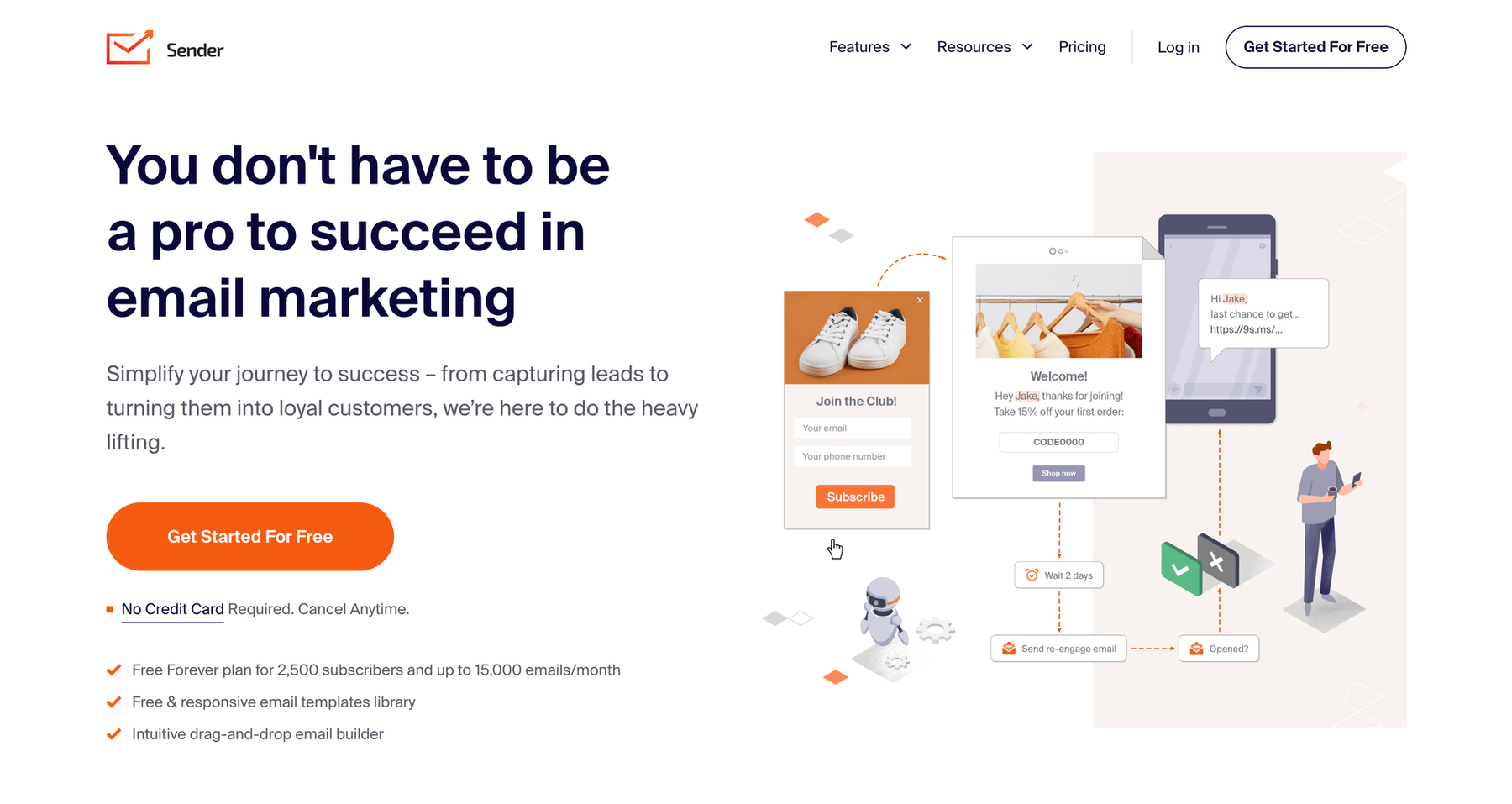
Sender provides solid marketing automation capabilities at budget-friendly price points, making it an attractive option for creators who want advanced features without the premium pricing.
Key Features:
- Visually impressive email builder with extensive design options
- Advanced automation sequences for subscriber nurturing
- Integrated SMS marketing capabilities
- Detailed analytics and reporting
- A/B testing for optimization
Pricing: Free plan for up to 2,500 subscribers; paid plans from just $8/month.
Best For: Marketers looking for Kit-level features at significantly more affordable prices, especially as subscriber lists grow.
Pros:
- Rich design options that exceed Kit's minimalist approach
- Powerful visual builder with extensive customization
- Significant cost savings for creators with larger audiences
- Strong automation capabilities comparable to Kit
Cons:
- Less creator-focused than Kit in terms of specific features
- Smaller community support network
- Not as specialized for digital product creators
- Newer to the market than established platforms
3. MailerLite—Best for Design Flexibility with Simplicity
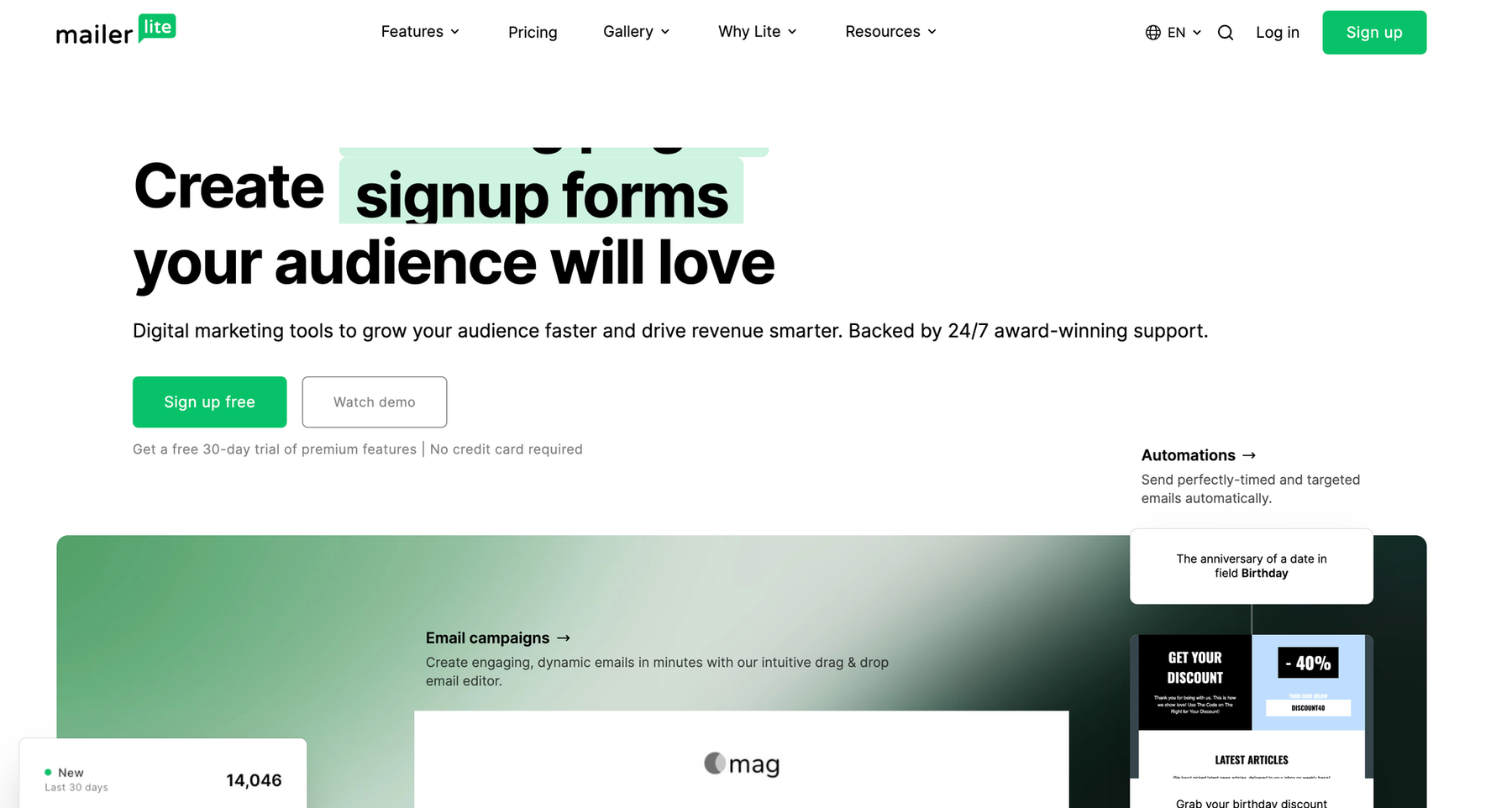
MailerLite combines user-friendly operation with excellent design capabilities, making it ideal for creators who want more visual customization without sacrificing ease of use.
Key Features:
- Intuitive drag-and-drop editor with extensive design freedom
- Streamlined automation workflows
- Built-in landing page creator
- E-commerce integration tools
- Rich free plan for smaller creators
Pricing: Free up to 1,000 subscribers; paid plans start around $10/month.
Best For: Bloggers and small creator businesses wanting greater design flexibility while maintaining simplicity.
Pros:
- Significantly more design options than Kit's text-focused approach
- Intuitive interface requiring minimal learning curve
- Affordable pricing structure that scales well
- Strong landing page capabilities
Cons:
- Less specialized for creators than Kit
- Fewer advanced tagging and segmentation options
- Not as focused on digital product sales
- Limited advanced automation compared to some alternatives
4. ActiveCampaign—Best for Advanced Marketing Automation
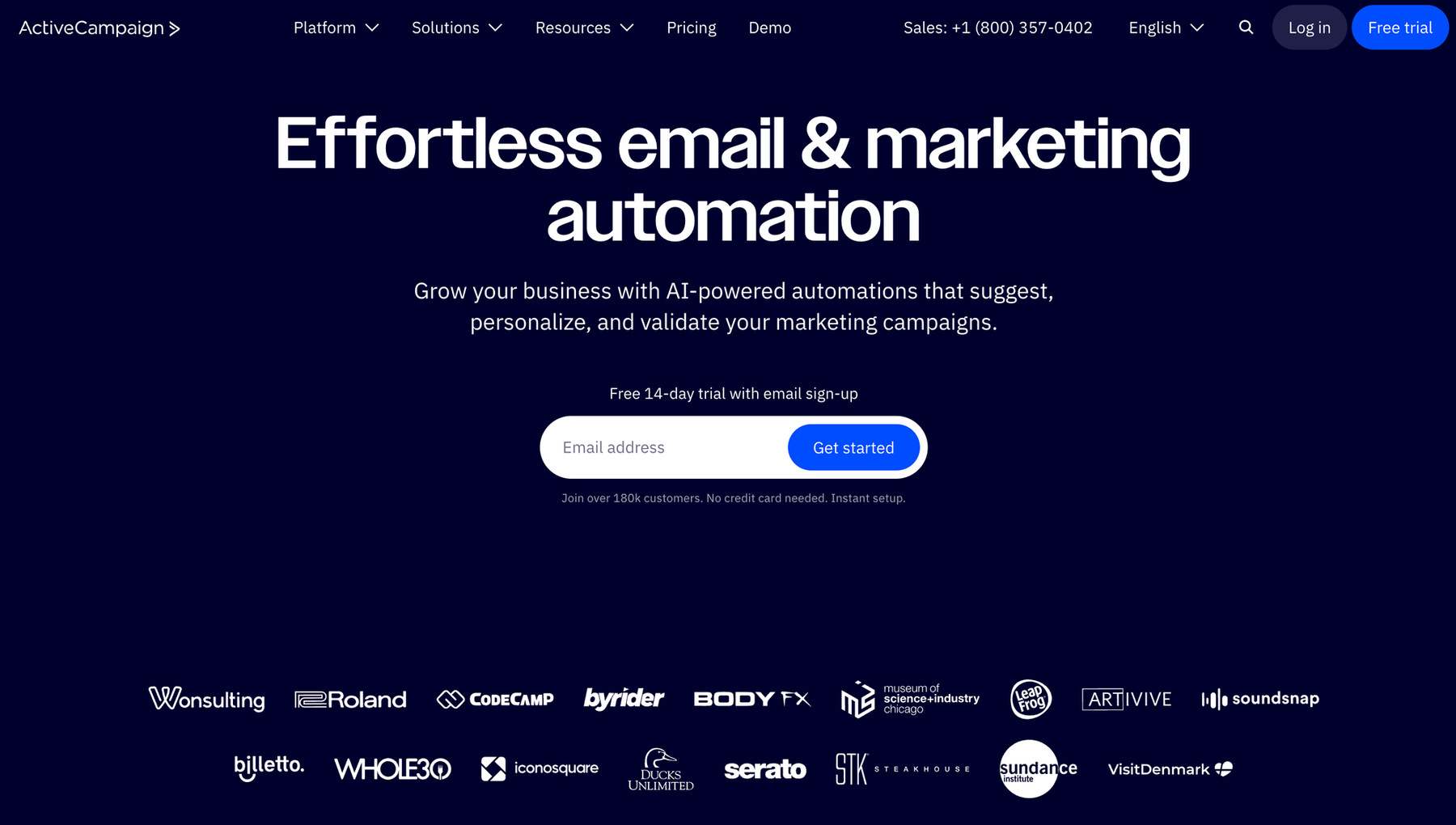
ActiveCampaign delivers powerful marketing automation combined with CRM functionality, making it perfect for creators ready to implement sophisticated marketing strategies.
Key Features:
- Advanced automation capabilities with visual workflow builder
- Integrated CRM for managing customer relationships
- Predictive sending for optimal engagement
- Split testing and conversion optimization
- Behavioral targeting based on user actions
Pricing: Starts at $9/month for basic features.
Best For: Creators who need sophisticated automation and want to integrate sales processes into their marketing.
Pros:
- Comprehensive automation options far beyond Kit's capabilities
- Built-in CRM functionality for managing customer relationships
- Advanced segmentation for targeted messaging
- Machine learning features that improve campaign performance
Cons:
- Steeper learning curve than Kit
- Less creator-focused interface
- Can be overwhelming for beginners
- More expensive to access all advanced features
5. beehiiv—Best for Newsletter Monetization
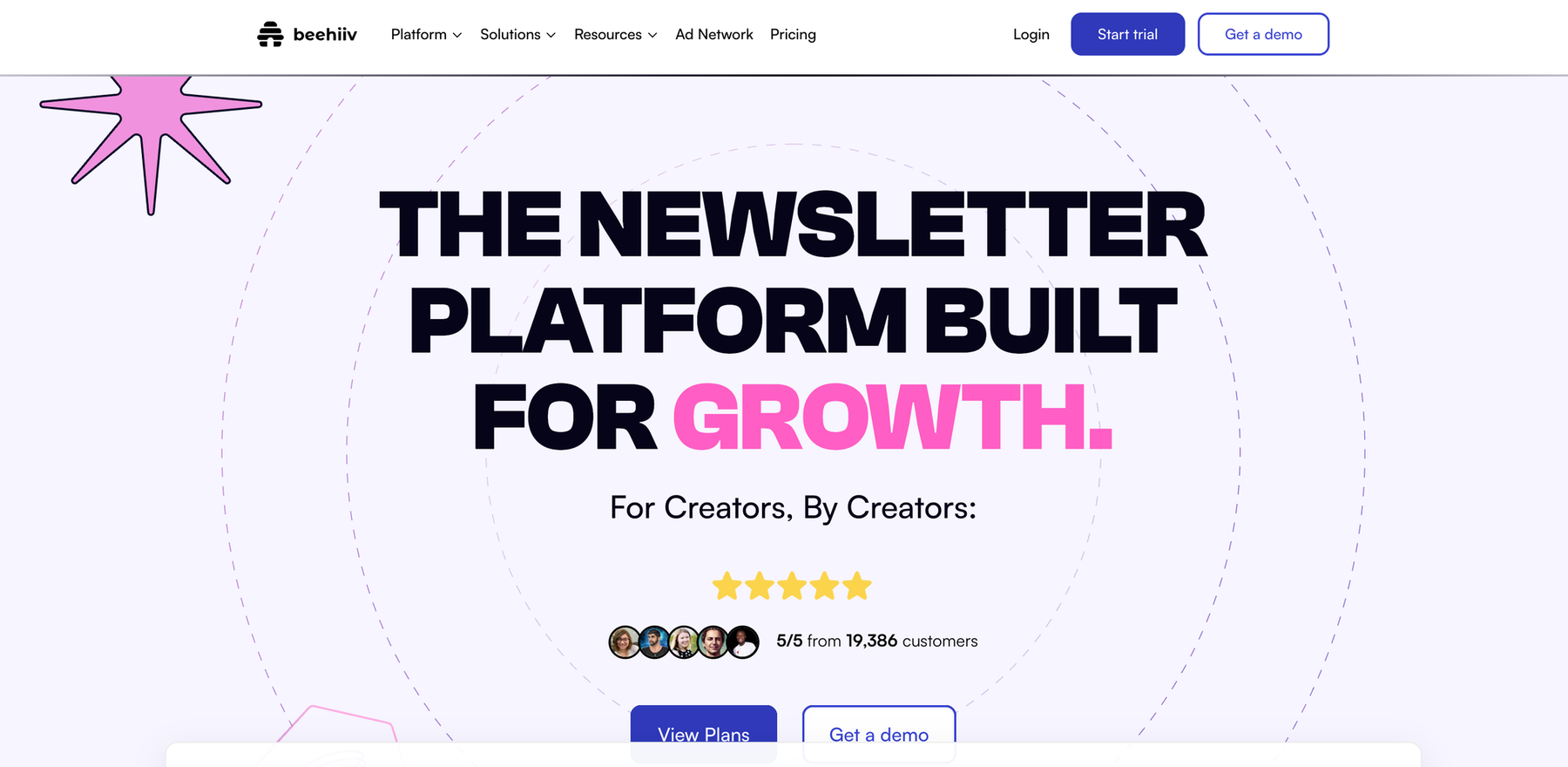
Beehiiv is an emerging newsletter platform built specifically for creators looking to grow and monetize their audience through newsletters.
Key Features:
- Purpose-built monetization tools for newsletter creators
- Built-in referral program to accelerate subscriber growth
- Custom domains and white-labeling options
- Comprehensive analytics focused on growth and revenue
- Native advertising capabilities
Pricing: Free plan available; paid plans from $25/month.
Best For: Newsletter creators focused primarily on audience growth and direct newsletter monetization.
Pros:
- Purpose-built for creators with specialized monetization features
- Strong analytics specifically for newsletter businesses
- Built-in referral system to drive subscriber growth
- Modern, clean interface designed for creator workflows
Cons:
- Less established than competitors with shorter track record
- More limited email marketing features outside of newsletters
- Fewer integration options than more mature platforms
- Less suitable for complex digital product businesses
6. Mailchimp—Best for Comprehensive Marketing Tools
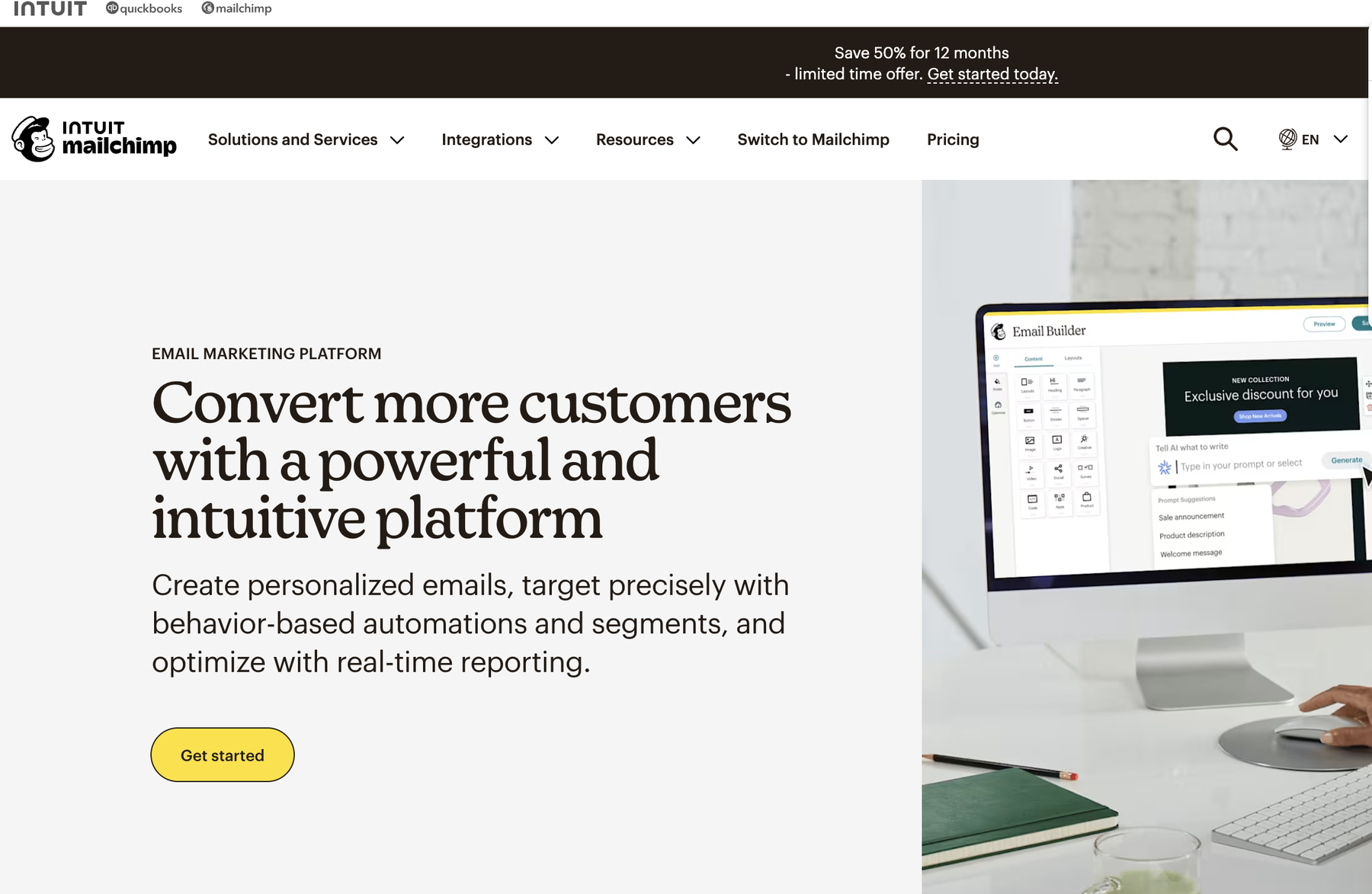
As one of the most established names in email marketing, Mailchimp has evolved into a comprehensive marketing platform with tools extending well beyond email.
Key Features:
- Extensive marketing automation capabilities
- Integrated content studio for creative assets
- Website and landing page builder
- Customer journey mapping
- Advanced analytics and A/B testing
Pricing: Free plan available; Standard plans from $13/month.
Best For: Growing creator businesses that need a complete suite of marketing tools beyond just email.
Pros:
- Extensive third-party integrations (over 300 apps)
- Strong analytics and reporting features
- Multi-channel marketing capabilities
- Well-established with extensive educational resources
Cons:
- More complex interface than Kit
- Pricing increases significantly as your subscriber list grows
- Less specialized for creator needs
- Can feel overwhelming for email marketing beginners
7. Moosend—Best for E-commerce Creators
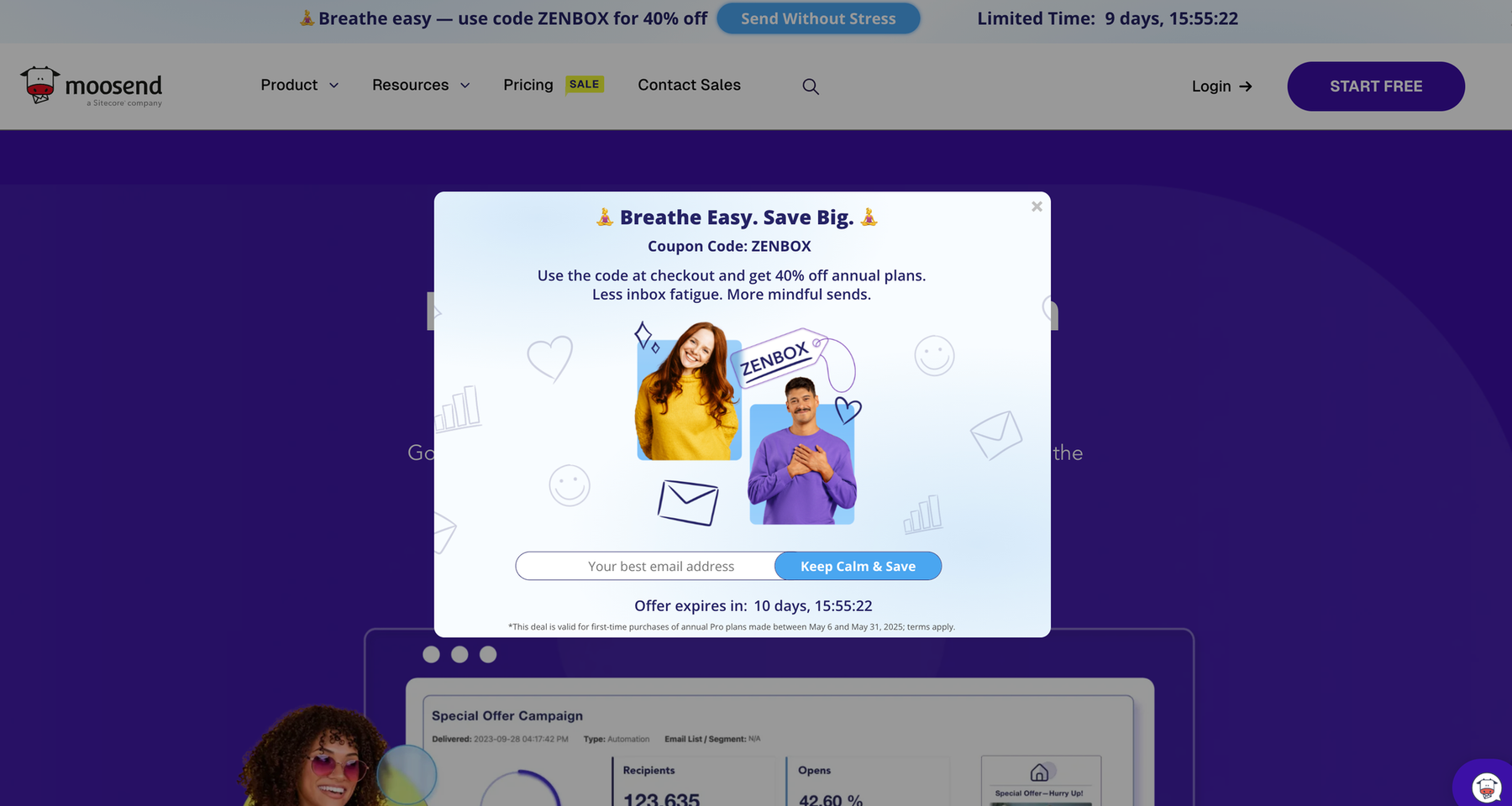
Moosend combines user-friendly operation with powerful e-commerce features, making it ideal for creators selling physical or digital products.
Key Features:
- Intuitive drag-and-drop email editor
- E-commerce-focused automation workflows
- Landing page and form builder
- Advanced segmentation and personalization
- AI-powered product recommendations
Pricing: Plans start at $9/month.
Best For: E-commerce-focused creators and marketers who need strong product marketing tools.
Pros:
- Intuitive interface requiring minimal training
- Powerful e-commerce features for product sellers
- Flexible pricing that scales reasonably
- Strong automation capabilities for product marketing
Cons:
- No free plan available
- Less specialized for content creators than Kit
- Fewer third-party integrations than more established platforms
- Not as focused on digital product creators specifically
8. Flodesk—Best for Design-Focused Creators
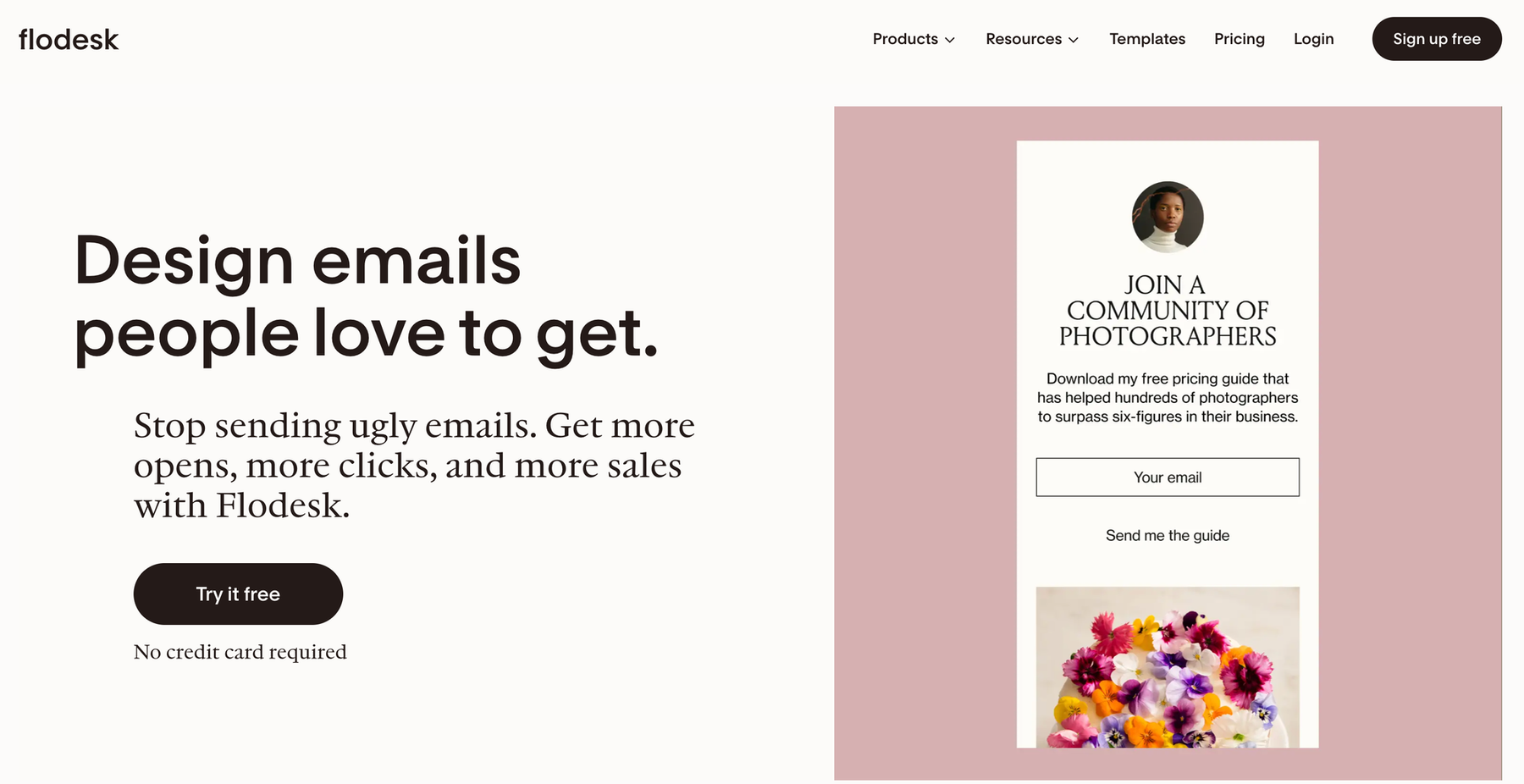
Flodesk has disrupted the email marketing space with its design-centric approach and unique flat-rate pricing regardless of subscriber count.
Key Features:
- Stunning, professionally designed templates
- Intuitive, highly visual customization interface
- Flat-rate pricing with unlimited subscribers
- Basic workflow automation for nurturing sequences
- Form and landing page builder
Pricing: Flat rate of $38/month (often available at discount).
Best For: Creators and small businesses that prioritize beautiful email design and want predictable pricing.
Pros:
- Exceptionally beautiful templates that elevate your brand
- Revolutionary unlimited subscribers for one predictable price
- Intuitive, truly creator-friendly design interface
- No pricing anxiety as your audience grows
Cons:
- Limited advanced marketing features compared to Kit
- Fewer integrations than more established competitors
- Basic automation capabilities compared to specialized platforms
- Less robust for digital product sales than Kit
9. AWeber—Best for Reliable Support
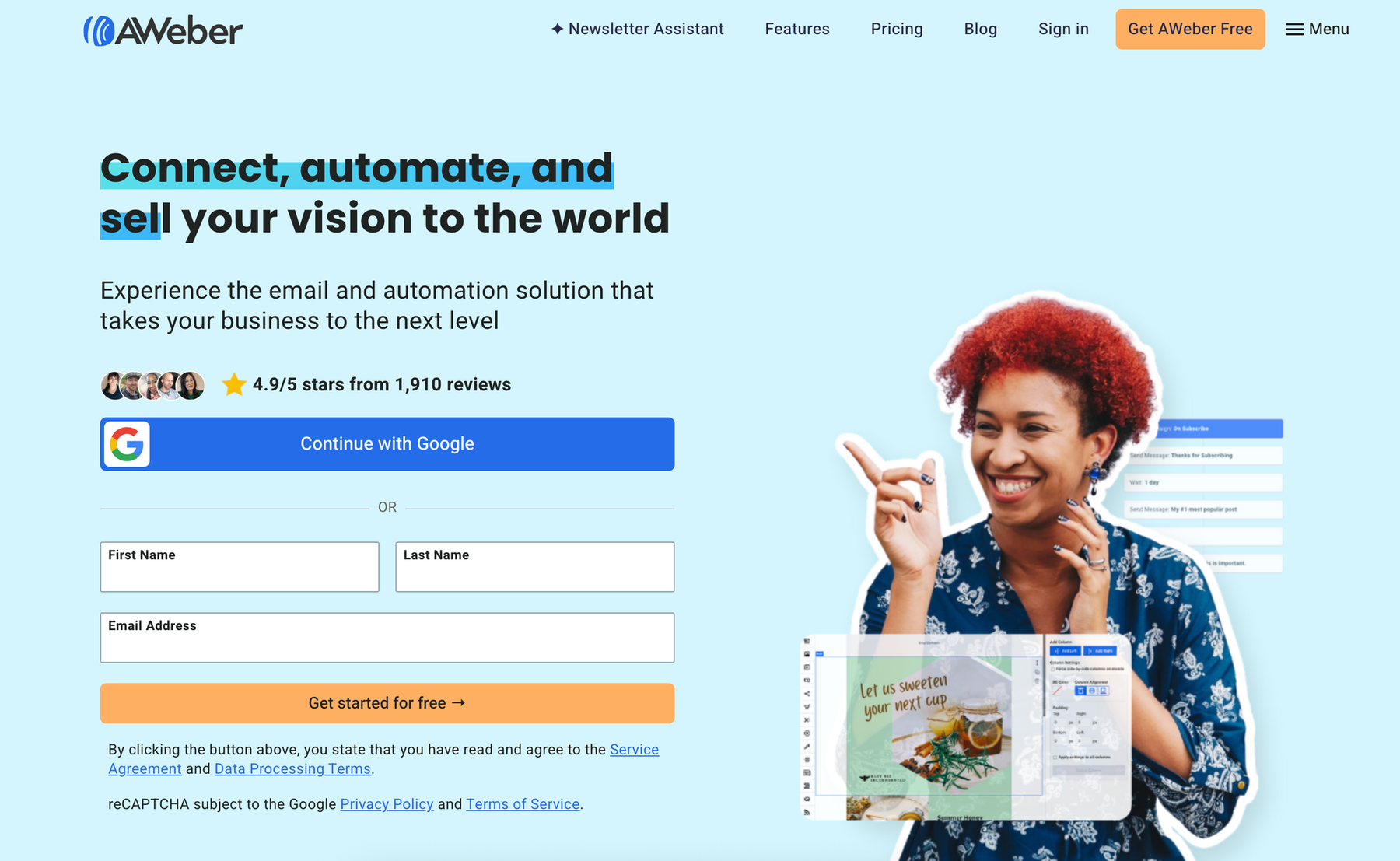
AWeber is one of the longest-established email marketing services, known for rock-solid reliability and exceptional customer support.
Key Features:
- Drag-and-drop email editor with extensive templates
- Automation sequences and campaigns
- Landing page and form builder
- Web push notifications
- AI-powered content creation tools
Pricing: Free plan available; paid plans start around $12.50/month (Lite).
Best For: Small businesses and creators seeking reliability and excellent support without a steep learning curve.
Pros:
- 24/7 customer support via phone, email, and chat
- Battle-tested platform with proven reliability
- Easy-to-use interface with minimal learning curve
- Strong deliverability reputation
Cons:
- Less specialized for creators than Kit
- Interface can feel dated compared to newer platforms
- Limited advanced automation features
- Not as focused on digital products as Kit
10. Omnisend—Best for Product-Based Creators
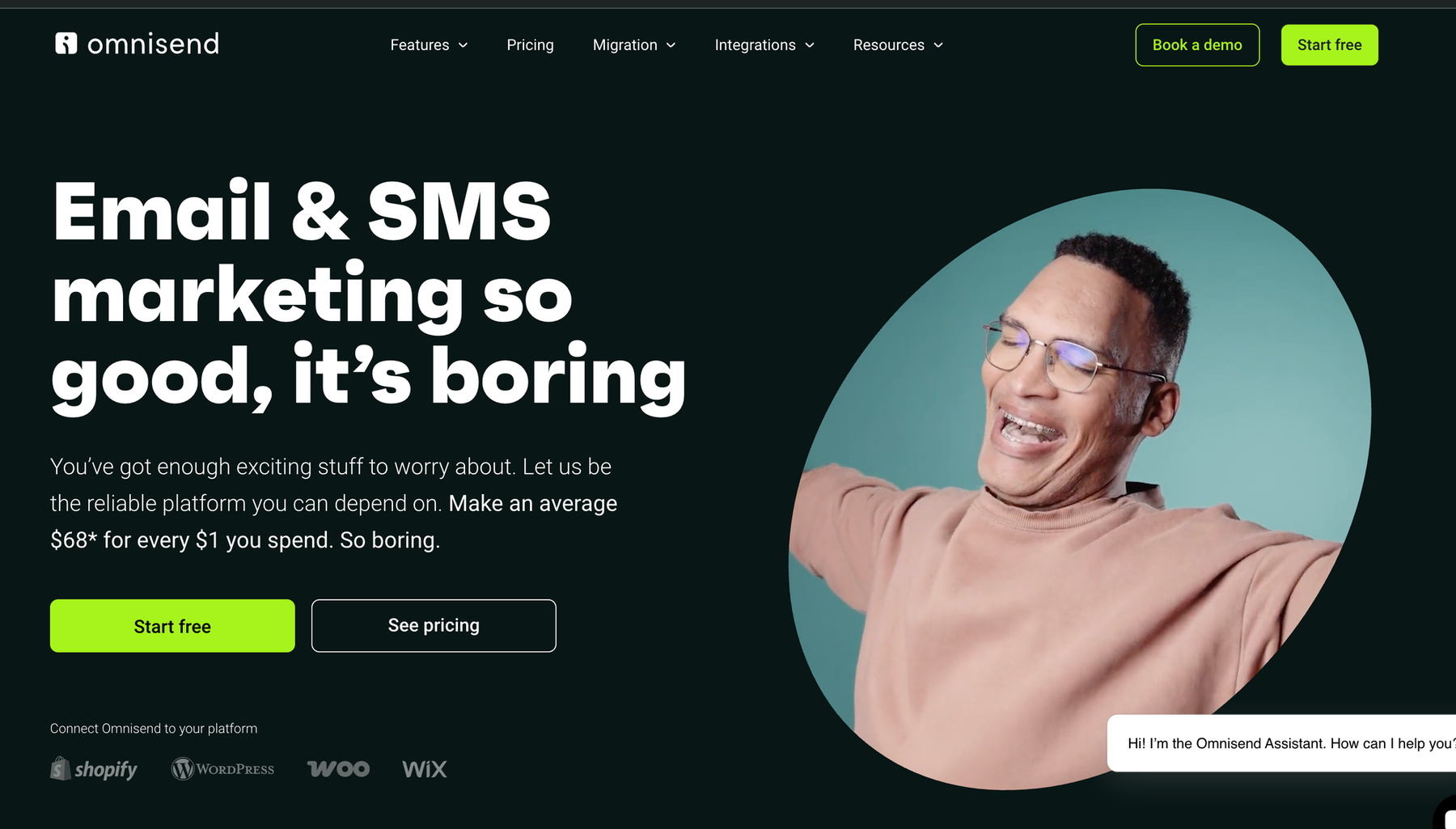
Overview: Omnisend specializes in e-commerce marketing automation, making it ideal for creators selling physical products through online stores.
Key Features:
- Product-focused email marketing tools
- Integrated SMS and push notifications
- Advanced e-commerce automation
- Customizable pop-up forms and landing pages
- Product recommendation blocks and dynamic content
Pricing: Free plan available; Standard from $16/month.
Best For: Creators with product-based businesses, particularly those using platforms like Shopify or WooCommerce.
Pros:
- Strong e-commerce platform integrations
- Omnichannel capabilities across email, SMS, and web
- Product-focused features specifically for online sellers
- Smart product recommendations and abandoned cart recovery
Cons:
- Less suitable for content creators without physical products
- More specialized for e-commerce than general creator marketing
- Limited advanced features for digital product sellers
- Less focus on audience building than Kit
Key Considerations When Switching from Kit (ConvertKit)
Transitioning from Kit requires careful planning to maintain your subscriber relationships and marketing momentum. Here are the critical factors to evaluate before making the switch:
1. Subscriber Migration Strategy
Moving your audience requires more than just exporting and importing contacts:
- Preserve critical data: Ensure you can export not just email addresses but also tags, custom fields, and engagement history.
- Maintain segmentation: Map Kit's tagging system to your new platform's segmentation capabilities to keep your audience organization intact.
- Re-establish consent and engagement: Consider sending a re-engagement campaign after migration to maintain deliverability and confirm subscriber interest.
- Timing considerations: Schedule your migration during a lower-volume sending period to minimize disruption.
2. Feature Compatibility Assessment
Different platforms organize features in unique ways:
- Tag system alternatives: Understand how your chosen alternative handles tagging and segmentation compared to Kit's approach.
- Automation recreation: Plan for rebuilding your crucial automation sequences on the new platform.
- Form and landing page differences: Evaluate how forms, landing pages, and subscription workflows differ from Kit's implementation.
- Integration ecosystem: Verify that your essential third-party tools integrate with your new platform.
3. Creator-Specific Functionality
Creators have unique needs that not all platforms address equally:
- Digital product sales capabilities: If you sell digital products, ensure your new platform provides comparable selling tools or integrates with your preferred sales solution.
- Membership features: For creators running memberships, evaluate how the new platform handles access control and member communication.
- Creator community features: Consider whether community features, resource libraries, or course delivery are needed in your email platform.
- Content delivery mechanisms: Assess how the new platform handles content delivery for newsletters, courses, or drip content.
4. Long-term Cost Projection
Look beyond the initial price tag:
- Scaling economics: Calculate how pricing changes as your subscriber list grows to 10K, 25K, 50K, and beyond.
- Feature tier limitations: Identify which features require higher-tier plans and factor those into your true cost.
- Add-on requirements: Some platforms charge extra for landing pages, automation, or advanced reporting.
- ROI comparison: Consider not just cost but also potential revenue impact from improved features or limitations.
Takeaways
While Kit (ConvertKit) has built a strong reputation serving creators, the right alternative can potentially offer significant advantages in pricing, features, design flexibility, or specialized capabilities for your unique creator business.
For budget-conscious creators seeking personalized support, Maileroo offers exceptional value while maintaining the essential features creators need. Design-focused creators will find Flodesk's unlimited subscriber model and beautiful templates compelling, while newsletter publishers might prefer beehiiv's specialized monetization tools.
Ultimately, the best Kit alternative depends on your specific needs, budget constraints, and growth trajectory. We recommend taking advantage of free trials to thoroughly test your top 2–3 optionsbefore making a final decision. The right platform should meet your current needs and scale effectively as your creator business grows.
Remember that the platform is just a tool: your relationship with your audience and the value you provide remain the most important factors in your success as a creator. Choose the tool that best enables you to nurture those relationships and deliver exceptional value to your audience.


